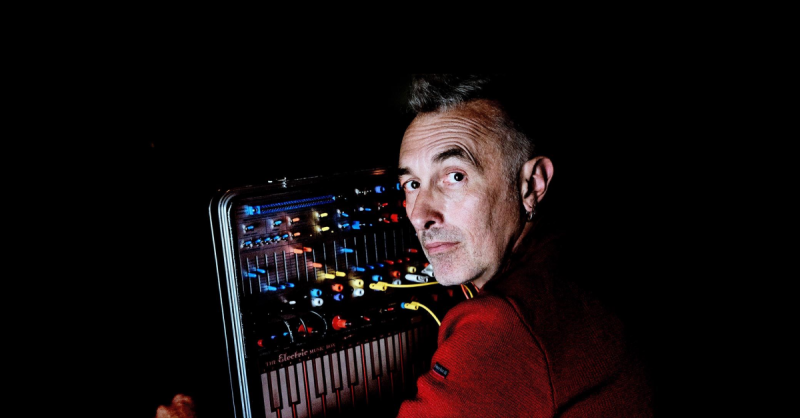After a 9-year gap the French multi-instrumentalist and composer Yann Tiersen returns to the Baltics & will offer a special two-in-one program. The first part of the concert will be occupied by a piano performance of the Tiersen's best-known pieces, while during the second part he will give an electronic music performance, which named “Kerber Complete Tour: Solo Piano + Electronics”.
14.03. Lithuania, Compensa Concert Hall
16.03. Latvia, Palladium Riga
18.03. Estonia, Noblessneri Valukoda
The new tour will focus on making personal connections, finding people and places that would be impossible within the constraints of a usual tour. With no crew, rider or any of the usual paraphrenia of touring, Tiersen will journey across Europe solo in his campervan, avoiding motorways, stopping to play in rural towns and villages, and he plans to make arrangements to eat at a friend, promoter, venue owner or fan’s home each day. The tour will start in Orleans, in France and travel throughout Europe, ending in Brittany.
Yann Tiersen's name is probably first associated with the chords permeated by dreamy melancholy in the romantic comedy "Amélie" (with the lovely Audrey Tautou in the lead role) or the sound waves of anxiety in the German tragicomedy "Good Bye, Lenin!". However, Tiersen's musical boundaries extend far beyond the horizons of just the world of cinema.
Yes, critics have compared his work to the ones of Philip Glass and Michael Nyman, and there is no doubt that Tiersen is one of the greatest and most original composers of our century, but at the same time, his music is not easy to classify. His musical style is deceptively easy to recognize but difficult to define. It varies greatly from one album to another and with time. His melancholic music and composing techniques mix classical and folk music elements with pop and rock ones.
Yann Tiersen composes and makes arrangements incorporating using an unimaginable number of different instruments (a part of which even can't be named musical). From the classical grand to the toy piano, from various guitars to the bouzouki and oud, from the French horn and saxophone to the glockenspiel, vibraphone and tam-tam, or the sounds produced by typewriters, cooking vessels or bicycle wheels. Amazingly, Tiersen himself plays all these traditional and not so traditional instruments both in the studio or on a live set.
Even though in an interview, Yann Tiersen emphasizes: "I'm not a composer and I really don't have a classical [musical] background", it's still coquetry. At the age of 4, little Yann learns to play the piano, and when he reaches his 6th birthday, he starts learning the violin. In his later years, he received classical training at several musical academies, including those in Rennes, Nantes, and Boulogne-sur-Mer.
While studying in Rennes, he manages to see bands like Nirvana, Einstürzende Neubaten, Nick Cave and The Bad Seeds, The Cramps, Television, Suicide, etc. Perhaps this is influenced by teenage maximalism: at the age of 13, Yann breaks his violin, buys a guitar and starts a rock band. But its life is short-lived, and soon Tiersen is alone again.
Instead of looking for new bandmates, he buys a cheap mixing desk and an 8-track reel-to-reel tape recorder. Experimenting with a synthesizer, a sampler and a drum machine, Yann's recording music on his own. In search of the imagined perfect sound, he listens to "tons of different music" and, not finding what he was looking for, comes to the conclusion that "you can take a lousy violin and create it yourself". In the summer of 1993, using the guitar, violin and piano accordion, around 40 compositions were created, which soon turned into Yann Tiersen's first two albums. The author himself calls it "a musical anarchic vision", because he did not follow classical canons, but intuition and his inner vision.
In 1995 and 1996, with an interval of 6 months, the first albums of Yann Tiersen "La Valse Des Monstres" and "Rue Des Cascades" (a collection of short pieces created with a toy piano, a harpsichord, a violin, a piano accordion, and a mandolin) were released. Five years later several tracks received greater exposure when they were featured on the Jean-Pierre Jeunet's film “Amélie”.
The soundtrack was a mixture of both new and previously released material, and Tiersen was also the recipient of the César Award for “Best Music Written for a Film”, and of the World Soundtrack Academy award. The soundtrack album charted in many countries, including the number one position on the French Albums Chart.
During that time, also the albums of the music author have already gained considerable recognition. The album "Le Phare", released in 1998, received enthusiastic critical acclaim (Tiersen is called one of the most original and leading composers of the new century) and became a commercial success.
In the following albums, he begins to collaborate with a number of well-known musicians and soloists: Ensemble Orchestral Synaxis, Lisa Germano, Neil Hannon (Divine Comedy), Jane Birkin, Elizabeth Fraser (Cocteau Twins), Stuart A. Staples (Tindersticks), etc.
In the middle of the last decade, Tiersen also took his music out around the world, playing shows with a full orchestra and an amplified string quartet. Don't miss out on a beautiful musical journey!






